GyeongGi Cultural Foundation
Introduction to 2018 Gyeonggi Creation-Center Artist in Residence : Minah Son
Gyeonggi Creation-Center
2018 residents of Gyeonggi Creation-Center can be found at the Gyeonggi Creation Center website (http://gcc.ggcf.kr/). |
2018 Gyeonggi Creation-Center Artist in Residence : Minah Son
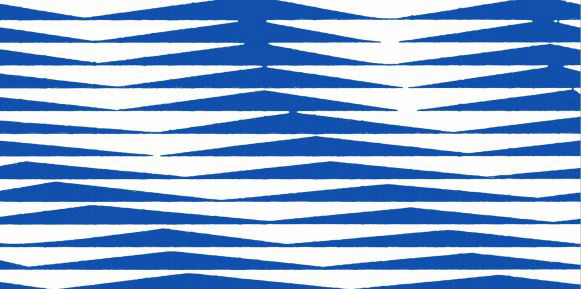
Tide time|Minah Son|2017|Mixed Meida, installations variable
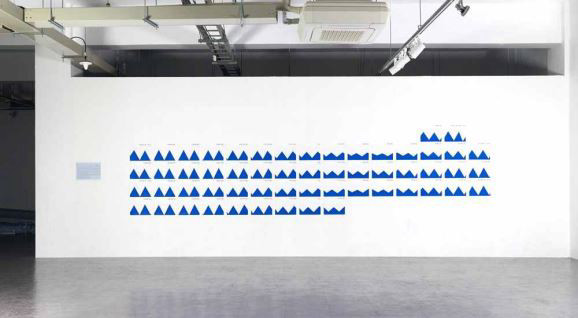
Tide time|Minah Son|2017|Exhibition view
[ Artist Note ]
Minah Son focuses on and visualizes system used and formed of certain value and norms. She also searches for various form of activities based on arts. She majored in formative arts at Berlin Art University, and 2018 currently is residence artist of Gyeongi creative center. In 2018, she is working on < DMZ peace zone international artist declaration > and < Island, desirable to visit-Gijeomsoak > project, and has been working on community art project < with friends and neighbors...Shelf project > at various places like apartment, villa, art gallery, and elementary school since 2000. She has held 6 personal exhibitions and 20 personal projects, and currently working as researcher of Art and City Social research institute.
< When worlds collide : Deabudo Sangdong >

When worlds collide : Deabudo Sangdong|Minah Son|2017|performance video still images
Daebudo is no longer Daebu-do (‘island’). Its previous landscape may be traced in historical records, but its current look is no different from any other areas where development is under way. Red soil is seen in different locations before Korean-style European pastoral houses emerge any time soon. In proportion to the red soil excavated, someone’s dream has been developed. The speed of change is faster and more condensed than it is in cities. Now, what dreams does it dream as it goes through changes.
A soil mound is built in front of the LPG storage in Sangdong, whose shape and location look as strange and awkward as the word of hazard. The red soil looks all the stranger because it is natural. A red soil mound and a fantastic illumination show presented above it. People also take with them the soil that carries the fantastic light.
When worlds collide visualizes the daily life, desires, and fantasies on Daebudo. It bluntly expresses the landscape that is familiar where one has failed to recognize or hasn’t recognized. Seeing the soil-land that is easily dug out and moved, I feel that the spot I have set foot on is also being moved somewhere while I’m not aware of it. There is no knowing whether they’re expanding the scope or getting the area affiliated with some other place. All one can see is the appearance of the red desire with unknown direction.
< Strolling House >
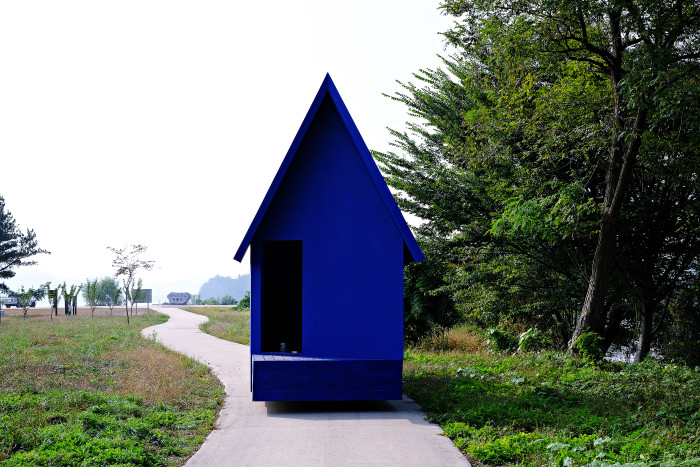
Strolling House|Minah Son|2016|Wood, Steel, Acrylic|180⨯360⨯400cm
Dumulmeori is a beautiful natural space that draws admiration from just looking at it. But the place where once can appreciate and feel that nature is well preserved is the road covered with the artificial curves of cement. “Strolling House”, located on that road, is a device rendering vision and the senses that are temporarily estranged from the scenery of Dumulmeori. It is a purposeful and artificial alien substance placed at a space intended only for nature. It is also an object moving/being moved in a contrived way on the artificial curved road.
The strange form and large colored wall space, the situation of moving/being moved of “ Strolling House ” will provide a moment of refreshing the natural scenery of Dumulmeori.
[Critique1] Strolling Life - The emotional foundation expressed by Minah Son's Strolling House (Beomchul Kwon)
Dumulmeori is beautiful. The nature of that location, where the Bukhangang River and Namhan River meet, evokes a special feeling within ourselves. That feeling doesn't stop at being personal and socializes by resonating with the special location called Dumulmeori and the emotions of other people. Such socialized emotion turns a location into a famous spot, a tourist attraction. According to Bifo, "capitalism has the extraction of physical energy as its basis, and preference capitalism has the subordination in society's neurotic energy as its basis." Changing the neurotic energy to emotion, it could be said that the success of a tourist attraction depends on monopolizing and managing the emotions formed around the place by letting them flow along the circuits drawn in a particular manner. What emotions could be flowing at the tourist attraction called Demulmeori?
Until recent years, Dumulmeori was a place of heated struggles. Demulmeori drew attention as the place resisting the four major rivers project until the end. To those who united to “farm, not build”, Dumulmeori may still remain as a hot memory. But memories fade easily. According to Bergson, a memory only becomes a present by borrowing the body of the consciousness into which it is to be inserted. If there is no object to be conscious of, could our memories awaken? After the resistance was resolved with an agreement, the organic fields and farms in Dumulmeori vanished and grass lawns and trails appeared. The traces of the past no longer remain there. Can we bring back the memories of resistance, and emotions of anger in that place again? What is the four major rivers project trying to achieve? The pretexts of water quality improvement or flood prevention are not even worth mentioning. It a river development but didn't a new emotion also have to be developed in order to develop the river and the surrounding area? A new emotion other than the memory of resistance and the emotion of anger, an emotion needed to erase past emotions and form a new tourist attraction. The fact that the new emotion forms us in a new way makes the Four Major Rivers Project exhibit a life-political characteristic.
Ironically, the Four Rivers Project professed itself as eco-friendly. The eco-friendly project composes nature in a particular way. Of course, a pure nature removed from society no longer exists, but the Four Major Rivers Project is more daring than anything. It forms nature with eco-friendly artificial structures. The nature that we see and feel is this artificial structure. It is nature that is more natural than nature. But nature is not the only thing becoming artificial. More than anything, our lives have become artificial. As a result of a struggle lasting over 3 years, fields on which organic farming was done became grass lawns, and trails appeared. We enjoy the views of Dumulmeori walking on the trails that were built by kicking out lives. Or are we being enjoyed? We only walk along the created path. It is hard to bring back the memories of resistance in this conscious action. Is it even reasonable on this natural tourist attraction? This place is now only an idle trail, and we have forgotten our past-- and it will fade more with time. Places without an imprint of memory can be easily recomposed. We don't know that our lives right now are composed to walk that trail. Thus, artificiality is not only our lives but ourselves as well. We just idly walk and enjoy nature - the created nature - and our consciousness does not reach into memories of the past. Accordingly, what dominates that path is the unknown ignorance. We don't even know what we do not know. The life and memories of resistance of the past have disappeared as if they sunk beneath the water where Namhangang River and Bukhangang River intersect, and only an idle trail remains. And new emotions based on unknown ignorance accumulate there.
Minah Son's “Strolling House” is on that trail. On that trail, newly developed emotions, the natural, or automatic emotions of peace overwhelm the emotions of the past, keeping with the nature-like place naturally, where wind blows, the river flows, and trees and grass are present. That house intervenes in such a switch of emotion, however it does not reminisce on the past. That house does not recompose the subject of consciousness or intend on reversing emotions by recalling memories of the past. Rather, it brings into question the present - our lives of today. That house is a house, but not a house. The vivid color that looks like it was freshly taken out of blue paint and the twisted diamond shape appear as if taking pains to assert that it is not a house. Just like the nature of Dumulmeori is not nature, the trail is not a trail, and our lives walking that trail are not our lives, that house is not a house. And as a house cannot walk by itself, it takes a stroll lying on a red forklift. Or rather, it is taken to a stroll. This "stroll of a house" is no different from our stroll. Just like the house takes (or is taken to) a stroll borrowing the power of a mechanical machine, we take (or are taken to) a stroll by the power of the trail-machine formed by the four major rivers project. Just like the stroll of that house is not that house's, our stroll is not ours. Perhaps, the pivotal scene of the installation and performance “Strolling House” is the moment when the red forklift lifts the house. Forklifts usually lift pallets on which freight is stacked. Pallets, with equilateral sides, were developed to increase the efficiency of loading and unloading through the standardization of freights. The house, replacing the pallets standardized to maximize efficiency, shows the standardized life very directly. A life walking along the determined trail, a life feeling nature through that stroll, our emotions developed through it, and the tourist attraction called Demulmeori, basing on the monopolization of that emotion. Perhaps our lives are in the same position as that house, substituting for pellets. A life lifted on a forklift. Therefore, everything there is objects of a staged stage. Our lives, walking along that path, are staged on that stage. Is it me who is taking a stroll, or is it the forklift I am on? Thus, what the house paradoxically shows is the staged life itself and ourselves, having a role in carrying that out.
Then what emotions does the “house” evoke? The unnatural house installed at a place where trees, grass, and trails are formed naturally evokes a strange feeling. That strangeness arises from the fact that the house does not blend in with the surrounding “nature” more than anything else. But what the house taking a stroll on the forklift shows is our lives, taking a stroll there. Why do we perceive our lives as strange? We, taking a stroll on that path, blend in naturally like the scenery, but that house, reproducing our lives, does not. Or rather, we feel that it does not blend in. This paradoxically reveals that our perception itself, looking at our lives, is used to a staged life. The reason that house feels strange is because the fact that life is staged corresponds with an unknown ignorance. Truly, how familiar we are with a life lived according to given scripts, a life of acting. At each point in life, a specific role is given to us, and we fully act out our lives to fulfill that role. And just as much, the “nature” of that place approaches us as natural.
In short, “Strolling House” composes the subject of consciousness at a place where memory is erased and emotion is reversed. However, it progresses into the present by not appealing to the past. That house brings us to that trail and the foundation of the peaceful emotions accumulating on that trail, taking issue with our current lives. That is why we keep thinking of the red pill Neo takes from Morpheus, out of a choice between a red pill and blue pill. Just like the red pill brought Neo to a new life, the red forklift lifting the blue house may show us the strolling life upon a stage based on the unknown ignorance. When the objects of emotions produced on the stage feel strange, we will ask whether we can walk on our own, whether we can take a stroll without a forklift, and how dramatic our lives are.
[Critique2] Useless House (ZIP) _ Minah Son's Strolling House (Kang Kim)
At Dumulmeori in Yangsuri, Gyeonggi-do Province, a blue house stands. There are no doors, no windows, and the ceiling is slanted. It looks somewhat like a house, but there aren’t any intact parts to actually call it a house. A house where no one can sleep or even lie down in. A house where no one cannot rest his tired body and be protected. But a house that sometimes goes on a stroll. It is the “Strolling House” made by Minah Son.
Dumulmeori, located in Yangsuri, Gyeonggi-do Province, was the representative organic complex of Korea. However, the four major rivers project (2008-2012) during the Lee Myung-bak administration changed the Dumulmeori organic complex area into bicycle-only roads and parks with grass lawns. Dumulmeori, named to suggest that the two waters of Bukhangang River, flowing from Geumgangsan Mountain, and Namhangang River, originating from the Geomnyongso Spring at the Geumdaebong Peak of Gangwon-do Province, have merged. And Dumulmeori, which has become a park. In that public space stands the blue “Strolling House”. However, that house is not just a “standing house”, but a “fixed house”. From late September 2016 to mid-December, Minah Son and a forklift driver lifted the heavy house with a forklift once a month to take it on a slow stroll at the scenic Dumulmeori. Once a month, that house is placed on a different scenery along the trail formed in the midst of grass lawns created as a result of the four major rivers project, and becomes a different scenery itself.
Discovering a public work of art having the 3 elements of public space, topic, and finances at a public space instead of an enclosed space of an art museum has now become commonplace. This new art form, emerged after Suzanne Lacy named it new genre public art, intervenes in the community's problems and produces works of fulfillment. That is, the content and format of art is changing by revealing the problems of communities, solving that problem, or thinking about it together. In addition, with the term “social art” (Junki Kim), people are demanding art to mingle with society more directly. Even putting aside the conceptual debate of whether society and art can be connected by the conjunctive word “social”, or whether art and society can be juxtoposed, it could be said that it is a consideration bsaed on the self-reflective introspection that art must serve a more positive role in society and community compared to the past. That is, it is an effort to find a new function and role of art by having art serve the function of mediating conflict by intervening in society and community. Such consideration and demand could be regarded as the attempt to break apart from the “conformist art” defined by Herbert Marcuse and enter into “anti-art” and “living-art”.
If Minah Son created a work following such grammar of community art, “Strolling House” would probably have become a farmer's hut of Dumulmeori. The hut where farmers of the organic complex rested before being pulled down. The “farmer's hut” restoring the hut in the present to let citizens out on an outing or farmers wishing to just touch the place that was once their farms with their eyes. Wouldn't she have let people reconsider the location of Dumulmeori and the various social problems connected to it through the farmer's hut?
However, Minah Son's “Strolling House” does not easily connect with the “farmer's hut” of Dumulmeori. Rather, it even seems unrelated to the location called Dumulmeori. The work's process does not display what activities Minah Son performed with Dumulmeori farmers to create that work and what processes she read from them. Rather, it feels even strange as if the history of this place, as an organic complex of the past with farmers and their productive lives, has been castrated. A house at Dumulmeori park. Not only that, but a “house” with its primary meaning and value deleted installed at a park and taking a stroll. Thus, her work must not be read by an interpretation following the grammar of community art but from somewhere a little bit steered away. It deviates from the usage of a house itself, and it distances itself from the contemporary use of art, that is, solving and intervening in community problems.
Minah Son's “Strolling House” is, in a strict sense, a house “taken” on a stroll. A “house” is not a living creature but an object, so it is obvious that it cannot go on a stroll on itself. However, Minah Son named this house “Strolling House”, that is, she regarded the house as a proactive subject having a life to go on a stroll by itself. Actually, a “house” is merely an indispensable “object” needed for people to live and rest in. However, from some point, a “house” didn't only function as a “necessary condition of human survival”. A “house” came to have monetary value on itself, and the reproduction of wealth accelerated according to the possession or number of the space called “house”. Thus, the class of humans having to survive on limited land and space came to be distinguished depending on the possession/nonpossession of the space called “house”. Just as the “house” transcended its original function and was subordinated to other values, the house became a subject of worship and admiration. The “house”, which had its values transitioned into a subject of worship and admiration, no longer feels strange if the “house itself” goes on a stroll, eats meals, goes to the bathroom, and has sex. This is why Minah Son's title “Strolling House” sounds reasonable.
The “house”, which has a primary use, becomes a subject of worship as its use expands, and at last becomes a “house” that goes on a stroll. But when the strolling house if “taken” on a stroll, for those looking at the scene, it may look like a stroll or a scene of deportation. The stroll and forced eviction paradoxically meet within the monthly action of the “Strolling House”. The “house”, which becomes a subject of worship and a subject of eviction as an identical object, and the park, which stages peaceful scenery violently despite having been an organic farmland as the same land. At this place of paradox, Minah Son connects the dotted line of that paradox with Yves Klein's blue, an uneven house, herself, and the labor of the forklift driver. This spot also connects with the location of Dumulmeori through the dotted line.
The artist, giving a dual reason of two extremes, and the performance of the house, stimulate tension in that aspect. That tension involves the viewers into the work and simultaneously refreshes the location. That is, the moment one reads the stroll, deportation also comes to mind. Thus, her work is not simply looked at but experienced. That experience is the viewer's private experience and an experience of that place, and touches on the human sensuous layer prior to any ethical decision as an experience had by the artist herself.
In this aspect, one can read the tendency of “critical art” lastly defined by Marcuse can be read from Minah Son's work. A work distancing itself from the social reality while refusing to cease criticism. Rather than viewing society and art as one, one can feel the intention to distance the two while pushing both into more different directions. Therefore, Minah Son's “Strolling House” is a useless house, but may be a house producing “use” in another meaning. And I make the guess that such “use” is a “use” as a house like a compressed file (ZIP) about a world that we may not have reached yet.
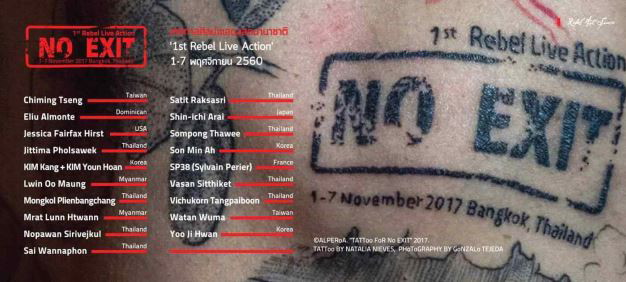
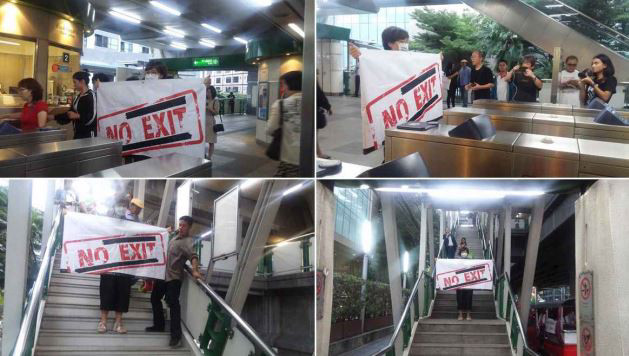
No Exit|Minah Son|2017|Rebel Live Action|Bangkok
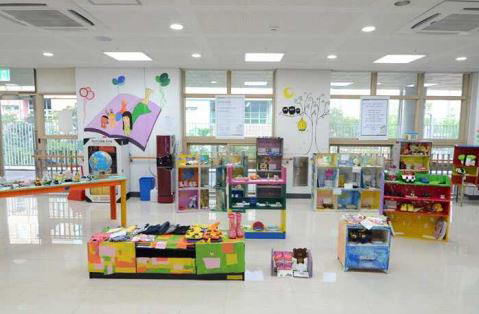
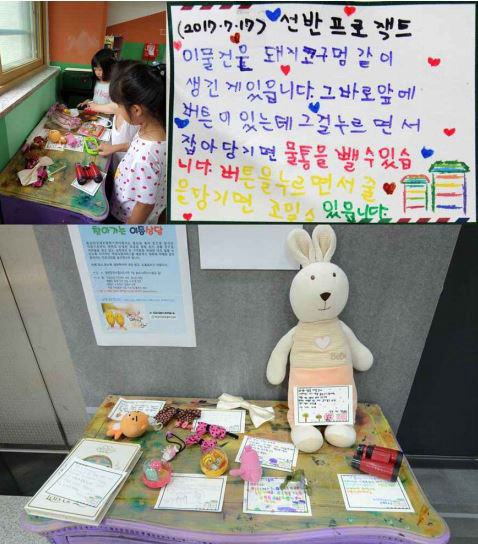
with friends and neighbors...Shelf project|Minah Son|2017|Exhibition view|
Hanback Elementary School, Dongtan-Ieumter
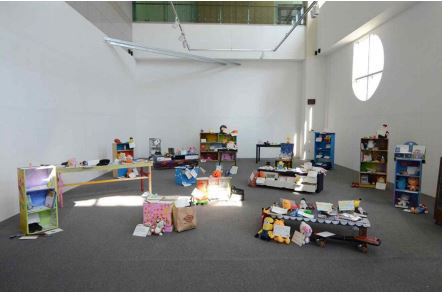
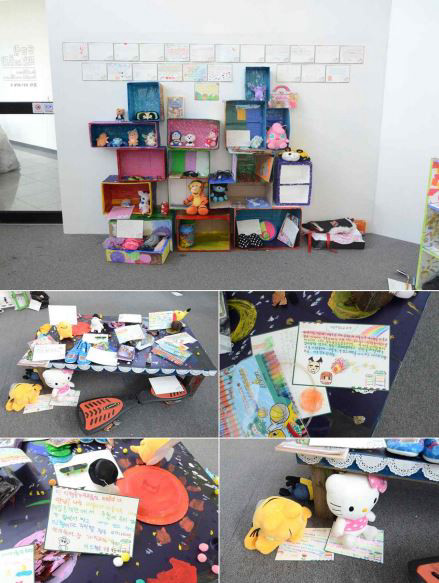
with friends and neighbors...Shelf project|Minah Son|2017|Exhibition view|
Dodream Smallmuseum, Dongduchun
Biography of Artist
Minah Son Educations 2004 Meisterschüler under Prof. Dieter Appelt, Universität der Künste Berlin Solo Exhibitions & Projects 2017 ‘Dear friends… shelf project’, Dodream Smallmuseum, Dongduchun 2017 ‘Dear friends… shelf project’, Hanback Elementary School, Dongtan-Ieumter, Hwasung 2016 ‘Dear friends… shelf project’, Hanback Elementary School, Hwasung 2016 ‘Dear friends… shelf project’, Nangchun & Jangchon Elementary School, Goyang 2013 ‘Dear friends… shelf project’, Daenam & Daedong Elementary School, Ansan 2012 ‘Steel Construction by Mullae’, Mullae-LAB39, Seoul 2012 ‘Dear friends… shelf project’, Daebu Elementary School, Ansan 2012 ‘Dear neighbor… shelf project’, Gyeonggi Creation Center, Ansan│Hangaram Art Museum, Seoul │Project gallery in Gyeonggi Museum of Art, Ansan│Punglim-Apt, Ansan 2009 ‘between see and read’, TOLL Gallery, Montevideo, Uruguay Group Exhibitions (selected) 2017 ‘When worlds collide’’ Daebu ecomuseum project, Ansan 2017 ‘No Exit’, Performance Festival, Bangkok 2017 ‘Imagination Storage’, Gyeonggi Creation Center, Ansan 2017 ‘The plateau with a wind’, Gyeonggi Creation Center, Ansan 2016 ‘Frontiers & Differences – Nomadic Gyeonggi Art Festa’, Yangpyeong 2016 ‘What is art?’, Goyang Aram Art Gallery, Goyang 2016 ‘A blooming coastline’, Hangchon Art Museum, Haenam 2015 ‘105-People’ Village film porject, Siheung 2015 ‘Mullae Art Sign Project’, Mullae, Seoul 2015 ‘Educational exhibition of creative art’, Gyounggi Creation Center, Ansan 2015 ‘Find a Hidden Culture in Daebu Island’, Gyounggi Creation Center, Ansan 2015 ‘Artist`s Portfolio II’, Sabina Art Museum, Seoul Awards & Residency 2011-2018 Gyeonggi Creation Center Residence, Ansan 2013 Selected from the Culture Voucher Art Planning Support Program of Gyeonggi Cultual Foundaion 2013 Selected from the Community Art Global Network project Support Program of Gyeonggi Cultual Foundaion 2012 Selected from the MEET Art Support Program of Seoul Art Space 2008 Selected as a Artist of New Start Program, ART COUNCIL KOREA 2007 The National Artists Studio Korea, Goyang, Residency Program 4th Artist |
<Copyright(c)2002 GGC All rights reserved.>
information
Introduction to Gyeonggi Creation-Center Artist in Residence/ Minah Son
keywords
- Writer
- GyeongGi Cultural Foundation
- About
- Everything about the GyeongGi arts and culture, GGCF
- homepage
- http://www.ggcf.kr
You might like
Location around
Introduction to 2018 Gyeonggi Creation-Center Artist in Residence : KWON OH-SHIN
Gyeonggi Creation-Center
Introduction to 2018 Gyeonggi Creation-Center Artist in Residence : Jeikei_Jeon,Heekyoung
Gyeonggi Creation-Center
Ansan_Cheonhasusan
Restaurant serving grilled jumbo shrimp
Introduction to 2018 Gyeonggi Creation-Center Artist in Residence : HyoungSan Jun
Gyeonggi Creation-Center